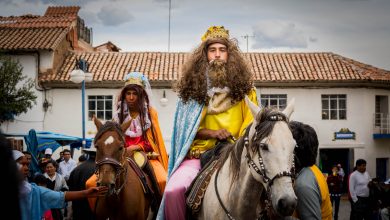The Bell that Props Up History and Corpus Christi, María Angola

The dark and dissonant sound of Maria Angola calls and demands being heard, even above all the hubbub of a good fiesta, such as in Cusco’s Corpus Christ. Different bands play distinctive melodies and harmonies, other bells from the Cathedral also sound, and yet when María Angola peels it claims presence and attention.
For some time now I have been fascinated with this bell and its sound, given its name that you see repeated around Cusco and in folktales, with its name that has a reference to the Virgin Mary but also to Africa and the importance of Africans, and especially people from Angola in Cusco. When I heard its sound, I could not let it be. It is a rumbling, deep dissonance, not unlike thunder rolling nearby.
Maria Angola called attention as it resonated deeply, even in my chest. It suggests the roll of sound in Indigenous practices, where the clap of thunder is meaningful as a power beyond the human and the sighing of the wind or the gurgling of a brook carry meaning and, arguably, play into the music that accompanies dancers.
The bell also calls attention to the heavy presence of Africans, especially people from Angola, in the Andean highlands and especially in Cusco during the colonial period. Slaves were brought across Panama to the port of Callao, as well as overland from Buenos Aires and the Rio de la Plata. They were important as intermediaries between the Spanish and the Indigenous peoples as well as craftsmen, farmers, and more. Cities, such as Cusco, contained large numbers of Africans.
However, the word yana, which in Quechua means black, also referred to the world within, the space of fertility and the place of origin within the earth from which people sprang. Africans raised the question for native Peruvians about how they might be associated with these fecund powers.

One sees the importance of Africans and this association in the many dances dedicated to them which also have an association to the world within. These include the Qhapaq Negro, the negrillo, and, of course, the Morenada from the altiplano and the Saya / Caporal . Yet one sees very few blacks today

Answers given to the question of why argue that Africans mixed into the general population and so passed into invisibility or that with the economic difficulties following independence they were taken to the coast and its plantations. It may also be that Africans suffered higher death rates than other peoples int he wars of independence.
In any case, they remain in one of the key ritual implements of Cusco, the bell María Angola. She will boom with dissonance and make herself known during the feast of Corpus Christi today and you will be left with no doubt of her importance and that of Africans to Cusco.




